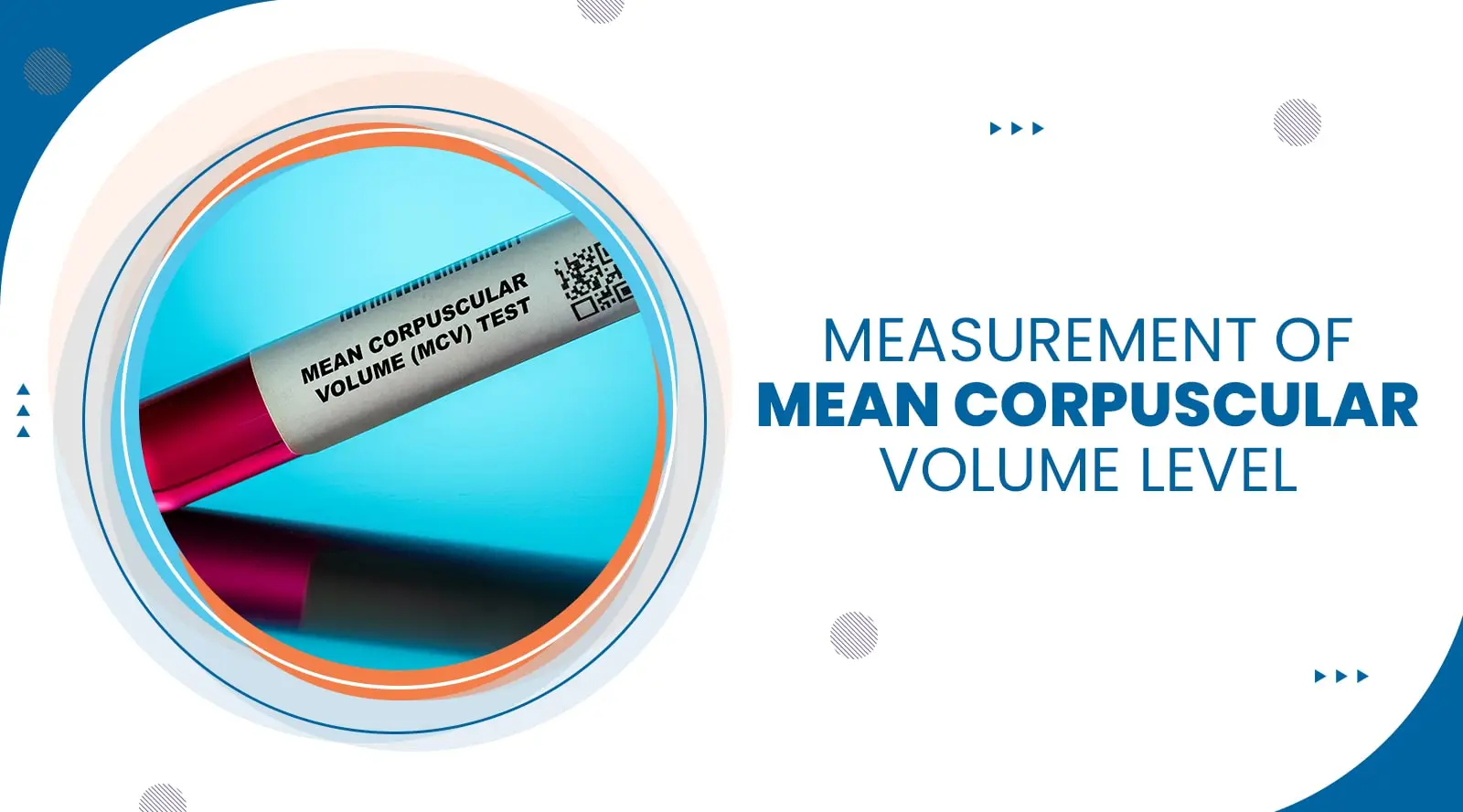-

We Are Now Open On Saturdays
-
20 Old Brompton Road, South Kensington, London SW7 3DL

We Are Now Open On Saturdays
20 Old Brompton Road, South Kensington, London SW7 3DL

Mean corpuscular volume or MCV calculates the size of red blood cells. The doctor asks you to conduct an MCV test, a part of the complete blood count blood test. This can help to detect several components of the blood, including white blood cells and platelets. If a healthcare professional suspects you have anaemia, they may use the MCV test determine what type of anaemia you have. Specific MCV levels indicate different kinds of anaemia, despite it being possible to have anaemia with normal MCV levels. Read on to know what MCV levels measure and what can lead to changes.
Red blood cells have several characteristics that a doctor can calculate using specific indicators. MCV denotes the red blood cell volume and size, on an average.
Other indicators for red blood cell are the following:
The results of these tests can be used by a doctor to determine and diagnose anaemia.
A person does not have to prepare for MCV blood test. During the MCV blood test, a blood sample from a vein will be collected.
Drawing blood has minimal risk associated, especially when conducted by an experienced professional. Everyone is different however and sometimes the collection of blood is straightforward in some people than others.
The side effects of MCV blood test are the following:
A doctor measures someone’s MCV levels when they have any of these symptoms:
These symptoms denote conditions that can affect the size of red blood cells. When the red blood cells are smaller than expected, a person may have microcytic anaemia. In the event that they are larger, a person might have macrocytic anaemia.
A typical adult MCV level should be 80-100 femtoliters (fl). But the typical range differs between age group and sex. Children who are within 6–12 years seem to have MCV of 86 fl. The results of MCV can differ in the labs and so, people need not worry if their reading is slightly below or above these ranges.
When a person has MCV level less than 80fl, this denotes they have microcytic anaemia. Microcytic anaemia is a kind of anaemia where the red blood cells are smaller. Iron deficiency can be the reason for microcytic anaemia. A person develops iron deficiency due to underlying health condition or factors such as medications and diet.
Deficiency of iron causes are the following:
Thalassaemia is a condition when the body does not produce sufficient normal haemoglobin. It is a genetic condition which a person inherits from their parents. Thalassaemia may range from being mild to severe. If an individual suffers from mild thalassaemia, they can have mild anaemia or do not have any symptoms. If someone has extreme thalassaemia, they may require regular red blood cell transfusions.
If someone has higher MCV level, their red blood cells will be larger than usual, and they have macrocytic anaemia. Macrocytosis happens in people with MCV level that is greater than 100 fl. Megaloblastic anaemia is a kind of of macrocytic anaemia. Deficiencies in folate (vitamin B9) and cobalamin (vitamin B12) are common causes of megaloblastic anaemia.
Here are some factors which can lead to deficiency in vitamin B12.
The deficiency of Vitamin B12 can occur when you are vegan. This is because Vitamin B12 occurs naturally in animal food sources. An individual may take supplements of Vitamin B12 or consume Vitamin B-12 fortified foods in order to address deficiency.
This inflammatory condition can affect your stomach, mainly parietal cells which lead to intrinsic factor. If the parietal cell does not have sufficient intrinsic factor, vitamin B12 cannot enter into your bloodstream through the distal small intestine. The doctors will treat this deficiency with iron infusions and vitamin B12 injections.
Other factors that can contribute to vitamin B9 and vitamin B12 deficiencies are the following:
If someone is tired and feels cold all the time, they may suffer from anaemia. People who have the symptoms of anaemia need to contact a doctor immediately.